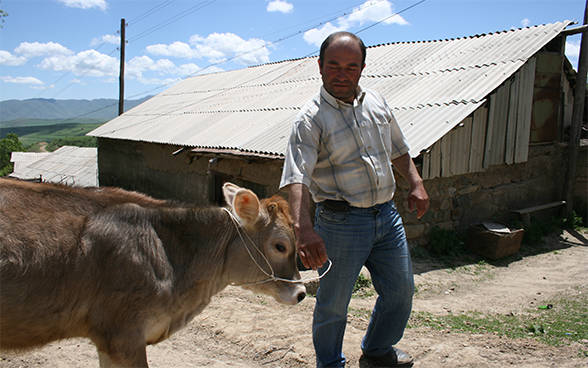The Syunik and Vayots Dzor provinces in southern Armenia are a remote and mountainous area on the borders with Iran and Azerbaijan. Agriculture is the country's main economic sector employing almost 75% of the working population, mostly in dairy and meat production. Nevertheless, it is still primarily made up of subsistence farming. Many of the farmers in Syunik and Vayots Dzor can be classed as vulnerable: they have one or two head of cattle and sell a small amount of their produce, but they are scarcely able to feed their own families.
Armenian farmers in general are still confronted with considerable challenges, including:
- Very poor road conditions hinder access to markets
- Milk collections are very irregular
- Available veterinary services are inadequate
- Farmers are unable to generate extra income to invest in new animals, equipment or seed
- Accessing information and exchanging expertise are difficult if not impossible
- The productivity and health of farm animals are jeopardised by an inadequate diet and the decrease in the quality of the livestock as a result of years of hybridisation. Milk production per head of cattle has decreased on average by roughly 35% since the collapse of the Soviet Union.
In spite of the challenges, however, it is important to point out that farming in Armenia has strong potential for growth. The Swiss Agency for Development and Cooperation (SDC) project aims to fulfil this potential by helping farmers from 100 rural communities across Syunik and Vayots Dzor increase their milk and meat production, and thereby their incomes.

